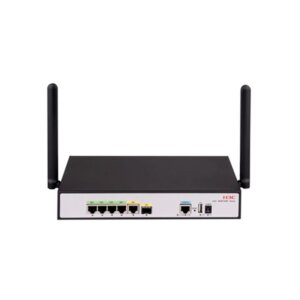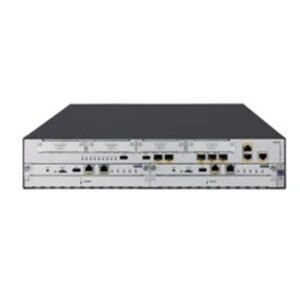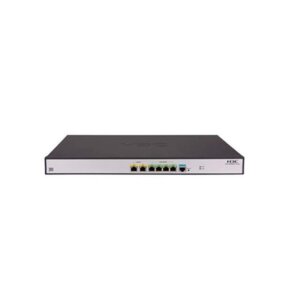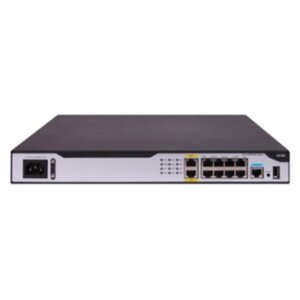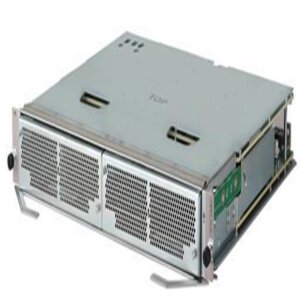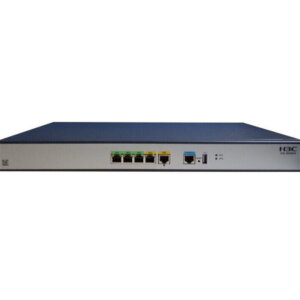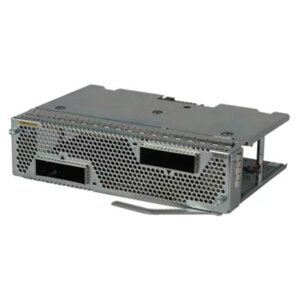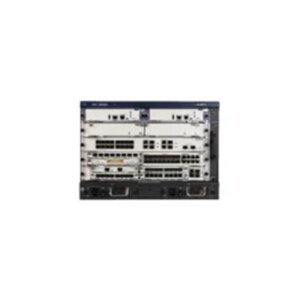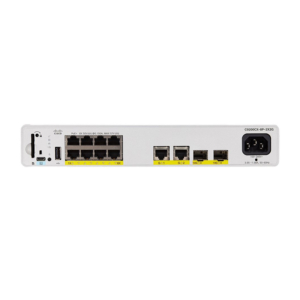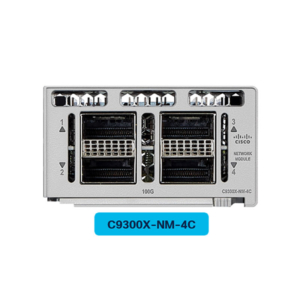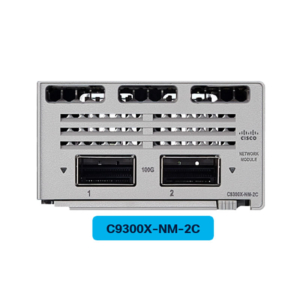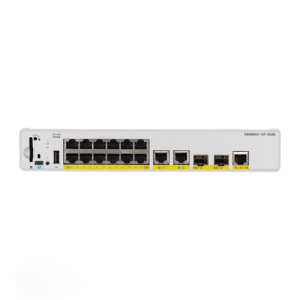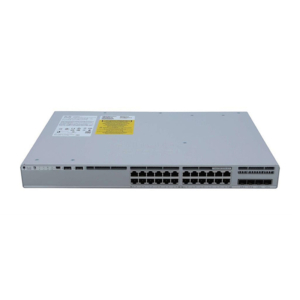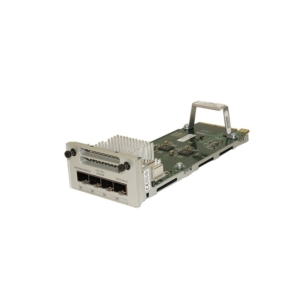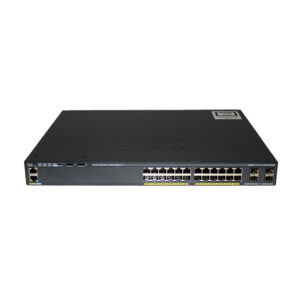H3C CR16000-M router are digital era-oriented cloud service routers applicable to government, 재원, transport, power grid, healthcare, 교육, and carriers. With a carrier-level HA and programmable NP architecture design, the router provides abundant features to process cloud services, carrier-level high availability, and exceptional forwarding capacity.
With high-density 100GE, 10GE, and GE ports and 155M/622M/2.5G POS, CPOS, and E1/T1 WAN ports, the routers can be deployed at different network positions. The router runs the state-of-the-art Comware network operating system, which is open, containerized, and programmable to meet user requirements in new businesses.
 H3C CR16000-M Routers Data Sheet
H3C CR16000-M Routers Data Sheet
기술 사양
| 안건 | CR16000-M8 | CR16000-M16 |
| Bi-direction Forwarding Capacity | 800Gbps | 800Gbps |
| 차대 | 통합 섀시, 19인치 랙에 설치 가능 | |
| MPU | 2 | 2 |
| 라인 카드 | 8 | 16 |
| 독립 스위칭 패브릭 모듈 | 2 | 2 |
| Cooling | Front-to-rear airflow | Front-to-rear airflow |
| Independent fan trays | Independent fan trays in redundancy | Independent fan trays in redundancy |
| Power system | Four built-in AC and DC power modules (N+M redundancy), without occupying any service module slot. | Four built-in AC and DC power modules (N+M redundancy) , without occupying any service module slot. |
| 치수 (H × W× D) | 267 × 440 × 440 mm (10.51 × 17.32 × 17.32 ~에, 6 러시아) | 356 × 440 × 440 mm (14.02 × 17.32 × 17.32 ~에, 8 러시아) |
| 포트 | FE, GE, 10GE (LAN/WAN), 100GE, 155M POS, 622M POS, 2.5G POS, CPOS, ATM, and E1/T1 ports
Interface type changing between 100GE and 40GE Interface type changing between 155M POS, 622M POS, and GE Interface type changing between ATM/ and POS |
|
| Unicast routing | IPv4/IPv6 듀얼 스택
정적 라우팅, 찢다, 리핑, OSPF, OSPFv3, IS-IS, IS-ISv6, BGP, 및 BGP4+ VRRP and VRRPv3 IPv6 neighbor discovery, PMTU discovery, TCP6, ping IPv6, traceroute IPv6, socket IPv6, static IPv6 DNS, specified IPv6 DNS server, and TFTP IPv6 client IPv4 to IPv6 transition ICMPv6 MIB, UDP6 MIB, TCP6 MIB, and IPv6 MIB ECMP and UCMP 정책 기반 라우팅 라우팅 정책 Tunnels such as GRE Static routing FRR, OSPF FRR, ISIS FRR, and BGP FRR |
|
| 멀티캐스트 | Routing protocols, including PIM-DM, PIM-SM, PIM-SSM, MSDP, MBGP, and Anycast-RP
IGMPv1/v2/v3 and IGMP snooping v1/v2/v3 PIM6-DM, PIM6-SM, 및 PIM6-SSM MLDv1/v2 and MLD snooping v1 Multicast policy and multicast QoS |
|
| MPLS VPN | MPLS label distribution protocols such as LDP and RSVP-TE
P/PE compliant with RFC 2547bis Three inter-AS MPLS VPN methods (option1/option2/option3) 희망 Multi-role host L2VPN, L3VPN, inter-AS L2VPN and L3VPN MPLS TE FRR and LDP FRR, with a switchover time of not more than 50ms 6PE and 6vPE Distributed multicast VPN ACL, which identifies traffic and forwards the traffic to different VPNs MPLS VPN network troubleshooting features, including MPLS ping and MPLS traceroute L2VPN access to L3VPN Access to VPLS via QinQ |
|
| BRAS service | PPPoE, PPPoEoVLAN, and PPPoEoQ access authentication
층 2 문, 층 3 문, and QinQ portal access authentication IPoE, IPoEoVLAN, and IPoEoQ access authentication Leased access authentication such as subnet-leased, interface-leased, and L2VPN-leased access authentication L2TP 층 2 transparent access and Layer 3 transparent access Authentication, authorization, and accounting cooperating with standard RADIUS/TACACS+ protocol 반지름, TACACS, and COPS protocols iTA, which differentiates services by destination addresses to perform accounting, bandwidth control, 및 QoS Unified wired and wireless authentication solutions, which meet the demands for massive user access and wireless client mobility BRAS IRF, which offers redundancy and simplifies Ops |
|
| ACL | IPv4 and IPv6 ACL and EACL
수신/송신 ACL Hardware-based ACL |
|
| QoS | 본사
Queue scheduling mechanisms such as PQ, WFQ, 그리고 CBWFQ More granular and flexible traffic control through HQoS 통신량 조절 Congestion avoidance technologies such as tail drop and WRED drop 우선순위 표시 및 언급 802.1피, TOS, DSCP, and EXP priority mappings 혼잡 회피, traffic policing, and traffic shaping Data packet marking based on IP addresses, port numbers, 802.1피, and DSCP values Data packet multilevel queue mechanisms include CQ, PQ, LLQ, and WFQ Multicast QoS |
|
| Ethernet features | 802.1큐
ARP 802.1Q VLAN trunk QinQ 종료 802.3디 (STP)/802.3승 (RSTP)/802.3에스 (MSTP) IEEE 802.3ad (link aggregation), static link aggregation, and link aggregation across different modules Aggregation of ports with different transmission rates Port mirroring and flow mirroring FlexE Channelized sub-interfaces |
|
| SDN technologies | VXLAN and EVPN
PCEP protocol Network information collection protocols such as BGP-LS NETCONF and YANG MPLS SR and SRv6 CBTS 오픈플로우 BGP FlowSpec 원격 측정 5G bearer network technologies such as EVPN, SRv6, and 1588v2 |
|
| 트래픽 분석 | 넷스트림, which supports the version 5, version 7, and version 9 data export formats, sampling, and flow statistics
Multi-log host Hardware-based NTA IPv4/IPv6/MPLS traffic collection and analysis Traffic collection and analysis in the inbound and outbound directions of interfaces Abnormal traffic detection and monitoring |
|
| 고가용성 | MPU, switching fabric module, power module, and fan tray redundancy
Separation of the control plane and switching plane 독립 스위칭 패브릭 모듈 Automatic fan speed adjustment Built-in DC and AC power modules, which can be installed on the same router and do not occupy service slots NSF, NSR, and GR BFD, which supports fast failure detection and a switchover time of not more than 50ms iFIT, which can detect network failures in real time, troubleshoot the network failures, and implement visible management over performance data |
|
| 시스템 관리 | In-band and out-of-band network management
Console/AUX Modem/Telnet/SSH2.0 CLI-based configuration FTP, TFTP, XMODEM, and SFTP file uploading and downloading management SNMP v1/v2/v3 RMON v1/v2 (groups 1, 2, 3, 그리고 9) NTP 품질보증 Fault alarms and self-healing DHCP Data logs ICMP Syslog 경로 추적 Multithreading access to the device via Telnet 1588v2 |
|
| Ambient temperature | 운영 중: 0°C~45°C (32°F ~ 113°F) | |
 IT 네트워크 장비 공급업체
IT 네트워크 장비 공급업체

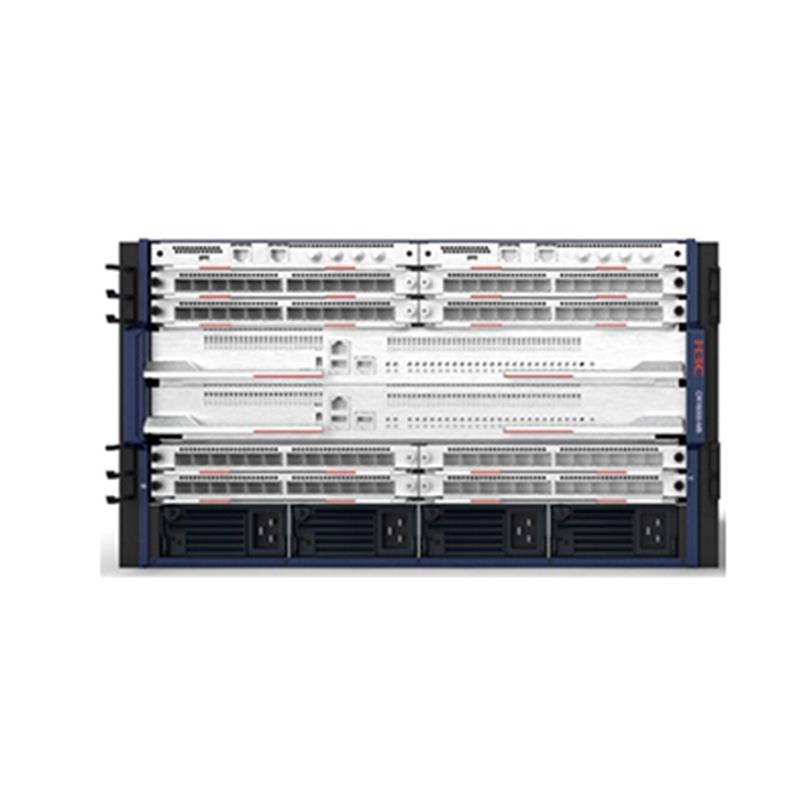
 당신의 제품은 원래?
당신의 제품은 원래? 예, 우리의 제품은 원래, 우리는 정품 H3C 제품만 판매합니다.
예, 우리의 제품은 원래, 우리는 정품 H3C 제품만 판매합니다.



